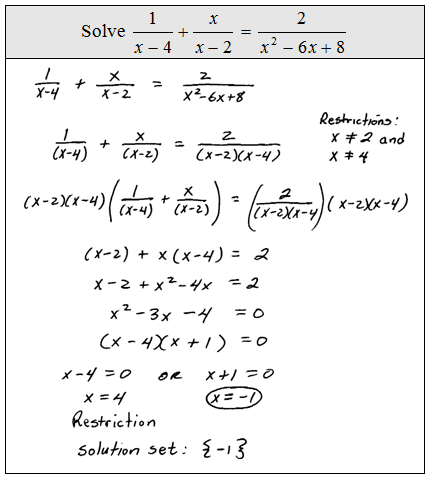1. A review of graphing lines, finding slope, and finding equations of lines from 2 points and a perpendicular line.
2. Review how to multiply and Factor all types of Polynomials. I cover Common Factoring, Factor by grouping, Trinomial factoring, and difference and sum of cubes!
3. I show you how to solve all types of linear equations from basic linear equations to more complicated ones with fractions and variables on both sides. There are also the ones that end up with no solutions and all reals as a solution.
4. The first step into learning how to solve a quadratic is by factoring. Here I show you how and explain why.
5. In addition we will look at the domains and restrictions of Rational Expressions.
6. How to Add and Subtract Rational Expressions. I show you how to find common denominators so you can simplify.
7. How to simplify Complex Fractions. I show you two different methods.
8. Solving quadratic equations.
... more to come soon.
6. How to Add and Subtract Rational Expressions. I show you how to find common denominators so you can simplify.
7. How to simplify Complex Fractions. I show you two different methods.
8. Solving quadratic equations.
... more to come soon.







































